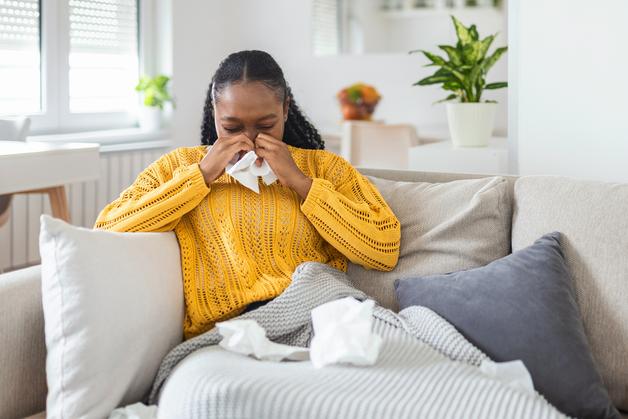A sudden ache, a visible swelling, a puzzling sense of pressure—these are not the first things most expectant parents expect to find on the pregnancy roadmap. Yet for many, vulvar varices during pregnancy arrive, uninvited, like an odd footnote inked beneath the usual milestones. What are those bluish, bulging veins? Should you be concerned, or just annoyed? Will they affect labor, intimacy, or everyday movement? These worries often simmer quietly, rarely voiced during appointments. But understanding the science can transform uncertainty into calm, helping you identify what’s normal, when to seek professional input, and above all, how to find relief and keep your confidence—yes, even when something as unexpected as vulvar varices during pregnancy appears on the journey.
Understanding Vulvar Varices: Medical Insights for Parents
Why Do Vulvar Varices Emerge in Pregnancy?
Vivid as they can look, vulvar varices during pregnancy are essentially the visible result of veins under pressure. When the body expands its blood supply to nourish both parent and baby, the pelvic veins receive a tidal wave of extra volume—veins that are often not accustomed to handling such a surge. Add pregnancy hormones like progesterone and estrogen (which soften and widen the vein walls), and the conditions become ripe for swelling. Visualize veins that can no longer push blood upward efficiently—gravity, the widening uterus, and sometimes weak venous valves (which normally act as one-way gates for blood) collaborate, and the result is those distended, tortuous veins beneath the skin’s surface or even bulging from the vulvar region.
Genetics? Yes, they matter. A family history of weak or fragile veins increases the odds. Gaining weight quickly, standing for hours, or sitting with crossed legs might also add unnecessary strain to the vascular network of the pelvis.
Recognizing Symptoms: Is It Always Painful?
Not always. Some parents spot the bluish, rope-like patterns, sometimes pouchy or bumpy, utterly by surprise—an accidental glimpse, nothing more. Others feel:
- Heaviness or fullness in the pelvis
- A sensation of burning, throbbing, or itching
- Discomfort that spikes after standing or nearing the end of a long day
- Dyspareunia (painful intercourse), a quietly disruptive symptom for couples
- Aching that worsens with movement or exercise
Rare cases bring complications: mild bleeding, typically connected to delivery, or a sudden painful swelling, still infrequent but a signal to consult urgently.
Is It Really That Common?
Surprisingly, yes. Vulvar varices during pregnancy affect a substantial number of pregnancies—some literature citing 10–20%. More likely to arise after the first pregnancy, they often team up with varicosities of the legs or, for a smaller group, pelvic congestion syndrome (a wider venous dysfunction producing pelvic pain even without visible surface swelling).
Diagnosis and Differential: What Else Could It Be?
When faced with swelling or lumps around the vulva, it’s vital to distinguish vulvar varices during pregnancy from other phenomena.
- Bartholin’s cysts: Soft, round, fluid-filled but not blue or engorged with blood like varices.
- Pelvic congestion syndrome: Typically involves deeper pelvic veins, often causes unrelenting pelvic pain not always visible on the surface.
A pelvic Doppler ultrasound (a safe, non-invasive test using sound waves to map blood flow) may be requested in ambiguous cases to check vein function, rule out clots, and spot coexisting issues such as dermatological inflammation or infection.
Living with Vulvar Varices: Everyday Tips and Obstetric Realities
Threat to Childbirth? What to Expect
A recurrent, anxious question: will vulvar varices during pregnancy demand a change in birth plans? For the vast majority, no. Vaginal birth remains entirely feasible. Even when veins appear spectacularly swollen, significant bleeding at delivery is rare due to the veins’ location and the body’s natural clotting adaptations. In exceptionally extensive or fragile situations, cesarean section may be proposed—a conversation to have with your obstetrician based on individualized risk, but the exception, not the rule.
What’s often most reassuring: almost all vulvar varices during pregnancy recede naturally within several weeks after birth, following the sharp drop in hormone levels and a rapid normalization of venous pressure.
Evidence-Based Prevention and Relief
What actually helps?
- Body mechanics: Alternate standing, sit with feet elevated, support hips; avoid crossing legs to promote better blood return from the pelvis.
- Compression support: Specially designed maternity compression shorts or tights counter swelling and deliver immediate comfort.
- Loose, breathable clothing: Say goodbye to tight undergarments—permitting optimal circulation is essential.
- Fiber-rich diet: Whole grains, fruits, and vegetables—constipation is a formidable enemy, increasing pelvic pressure with every strain.
- Hydration: Ample water intake lubricates vascular dynamics and assists in circulation.
- Gentle activity: Walking, swimming, and prenatal yoga maintain vein tone and reduce venous stasis.
- Cold therapy: Brief, local cold packs provide realistic relief during episodes of pain—never for extended periods, just enough to constrict vessels and ease burning.
- Natural topicals: Topical plant extracts like witch hazel or horse chestnut find anecdotal favor; discuss with your provider before use due to limited data in pregnancy.
When Do You Need Medical Help?
Red flags shouldn’t be ignored.
- Sudden, intense pain or new swelling, especially if red, hot, or hard—potential signs of vein thrombosis (a clot), requiring prompt evaluation
- Unexplained bleeding
- Persistent or spreading skin changes
Providers may recommend topical creams, rest on the left side (which reduces pressure on the largest pelvic veins), and in rarely persistent or severe postpartum cases, minimally invasive therapies like sclerotherapy or embolization to close off problematic veins.
Emotional Wellbeing: The Unspoken Discomfort
The visibility, the odd sensation, the hit to intimacy—vulvar varices during pregnancy may feel like a silent burden. While most symptoms retreat after childbirth, mental distress or self-consciousness may quietly persist. Regular, candid conversations with your healthcare provider, openness about changes in comfort or relationships, and the reassurance that you’re dealing with a recognizable, benign condition—these are indispensable. Some parents find solace in observing their symptoms, discussing with professionals, and not allowing embarrassment to get in the way of search for relief.
Uncommon Complications: When Caution Matters
No symptom should be brushed off if it deviates from what you’ve previously felt—especially:
- A hot, painful, or prominently swollen area (hard clot risk)
- Pronounced, persistent bleeding requiring immediate attention
- Changes to skin color or developing ulcerations (prolonged congestion can, albeit rarely, affect skin health)
- Persistent pelvic pain hinting at broader pelvic venous insufficiency
Clear follow-up with your care provider ensures ongoing assessment, reassurance, or early intervention if ever required.
Key Takeaways
- Vulvar varices during pregnancy are common, uncomfortable, but overwhelmingly benign. They arise due to increased blood volume, hormonal changes, and mechanical influences during pregnancy—usually vanishing within weeks after giving birth.
- Symptoms include visible, swollen blue veins, pelvic heaviness, burning, or pain aggravated by standing and activity; most resolve without intervention.
- Diagnosis rests on clinical examination and, where unclear, may involve pelvic Doppler ultrasound.
- Protecting your comfort involves lifestyle modifications—gentle activity, loose clothing, targeted compression, dietary balance, and reassurance from both medical providers and empathetic support systems.
- Most parents deliver vaginally, complications like severe bleeding remain rare, and persistent varices have successful treatment options (sclerotherapy, embolization) available for exceptional cases.
- If you notice new, intense pain, swelling, redness, or bleeding—consult without delay. Your provider can personalize solutions and monitor for rarer issues.
- For tailored tools, evidence-based guidance, and free child health questionnaires during pregnancy and postpartum, download the Heloa app.
Knowledge and early action truly empower, replacing uncertainty with peace of mind on a journey already rich in new experiences.
Questions Parents Ask
Can vulvar varices persist after pregnancy?
Most of the time, vulvar varices reduce or disappear within a few weeks after childbirth as hormone levels stabilize and the pressure on pelvic veins decreases. Cependant, il arrive, dans de rares cas, qu’elles persistent au-delà de la période post-partum. Si les veines restent visibles ou inconfortables plusieurs semaines après la naissance, n’hésitez pas à en parler à un professionnel. Il saura vous accompagner et envisager des solutions si besoin, toujours dans le respect de votre situation et de vos choix.
What are the treatment options for vulvar varices during pregnancy?
Pendant la grossesse, les traitements se concentrent sur le soulagement des symptômes tout en respectant la sécurité du bébé. Vous pouvez par exemple essayer de porter des sous-vêtements ou des vêtements de soutien conçus pour les femmes enceintes, élever les hanches ou éviter de rester longtemps debout, et adopter une bonne hygiène locale. S’il arrive que la gêne soit importante, un professionnel pourra discuter d’autres options avec vous. Des interventions telles que la sclérothérapie, où une solution ferme la veine, ne sont généralement envisagées qu’après la grossesse, mais chaque situation est unique et mérite une attention personnalisée.
Is itching or discomfort common with vulvar varices?
Oui, il est fréquent de ressentir de l’inconfort, une sensation de lourdeur ou des démangeaisons lorsqu’on présente des varices vulvaires. Cela peut varier d’un jour à l’autre ou selon les activités pratiquées. Rassurez-vous : ces sensations sont habituelles et bien connues. Parfois, des mesures simples comme porter des vêtements amples ou surélever les jambes peuvent nettement améliorer le quotidien. Si la gêne devient importante, parlez-en à un professionnel qui saura proposer des conseils adaptés à vos besoins.









